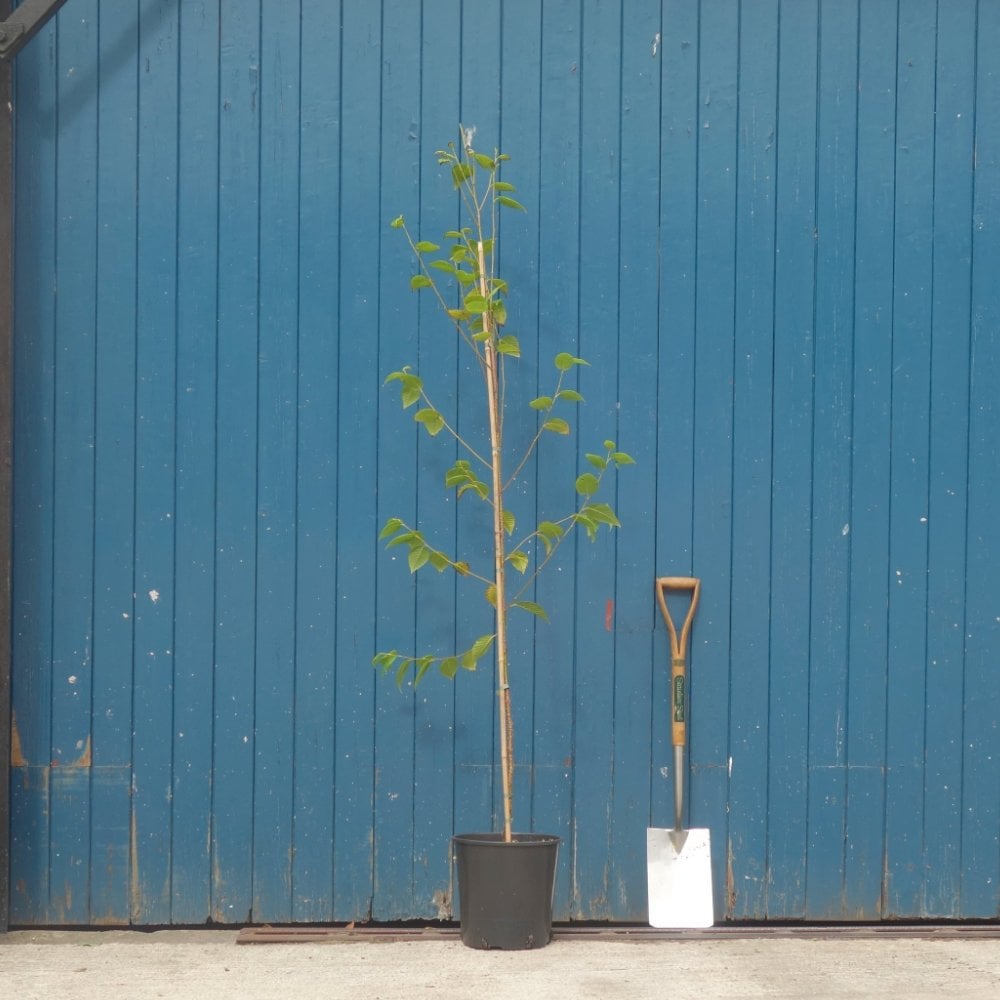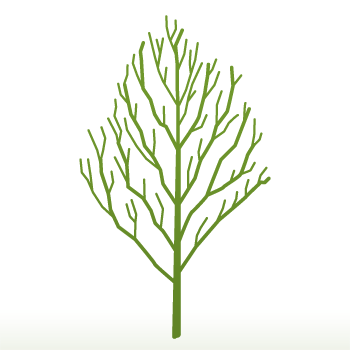Betula utilis 'Forest Blush' Tree
Betula utilis 'Forest Blush' Tree
Himalayan Birch Trees
Single stem tree, 150-200cm, 12L pot
Despatched within 2-4 weeks
Key features




Description
Originating in China, Betula utilis 'Forest Blush' is a rare variety of Himalayan Birch admired for its distinctive, smooth bark and elegant form. The peeling bark is a soft creamy white colour, tinged with pale tones of pink and orange. Combined with its slender, upright growth habit, this gives ‘Forest Blush’ a very beautiful and graceful overall appearance—an ideal choice for winter interest. In spring, mid-green leaves emerge accompanied by yellow/brown catkins. In the autumn, the leaves take on hues of golden yellow.
Winner of the RHS Award of Garden Merit, Betula utilis 'Forest Blush' is hardy and tolerant of drought once established. Plant in any moist, well-draining fertile soil in a full sun or partial shade position. Pair with a red bark Birch tree, such as Betula albosinensis septentrionalis, for a dramatic contrast of colours. Expect Betula utilis ‘Forest Blush’ to reach an approximate height and spread of 9 x 6 metres in 20 years.
AKA Himalayan Birch 'Forrest Blush', Betula ermanii 'Forrest Blush', Betula utilis 'Forrest's Blush'
| Small shrubs (1-3) | Young trees & 4+ small shrubs | Select semi-mature trees & shrubs (1-4) | All other mature trees (any quantity) | |
|---|---|---|---|---|
| Mainland UK ex. Scottish Highlands | £10 | £12 | £35 | from £55 |
| Scottish Highlands & the Islands | From £30 | |||
| Outside Mainland UK | Currently we are unable to deliver outside of Mainland UK | |||
Product Details
Key features




Description
Originating in China, Betula utilis 'Forest Blush' is a rare variety of Himalayan Birch admired for its distinctive, smooth bark and elegant form. The peeling bark is a soft creamy white colour, tinged with pale...
Originating in China, Betula utilis 'Forest Blush' is a rare variety of Himalayan Birch admired for its distinctive, smooth bark and elegant form. The peeling bark is a soft creamy white colour, tinged with pale tones of pink and orange. Combined with its slender, upright growth habit, this gives ‘Forest Blush’ a very beautiful and graceful overall appearance—an ideal choice for winter interest. In spring, mid-green leaves emerge accompanied by yellow/brown catkins. In the autumn, the leaves take on hues of golden yellow.
Winner of the RHS Award of Garden Merit, Betula utilis 'Forest Blush' is hardy and tolerant of drought once established. Plant in any moist, well-draining fertile soil in a full sun or partial shade position. Pair with a red bark Birch tree, such as Betula albosinensis septentrionalis, for a dramatic contrast of colours. Expect Betula utilis ‘Forest Blush’ to reach an approximate height and spread of 9 x 6 metres in 20 years.
AKA Himalayan Birch 'Forrest Blush', Betula ermanii 'Forrest Blush', Betula utilis 'Forrest's Blush'
Planting & Care
Delivery Information
| Small shrubs (1-3) | Young trees & 4+ small shrubs | Select semi-mature trees & shrubs (1-4) | All other mature trees (any quantity) | |
|---|---|---|---|---|
| Mainland UK ex. Scottish Highlands | £10 | £12 | £35 | from £55 |
| Scottish Highlands & the Islands | From £30 | |||
| Outside Mainland UK | Currently we are unable to deliver outside of Mainland UK | |||
MORE TO GROW YOUR GARDEN



















